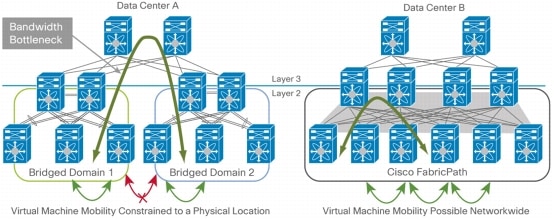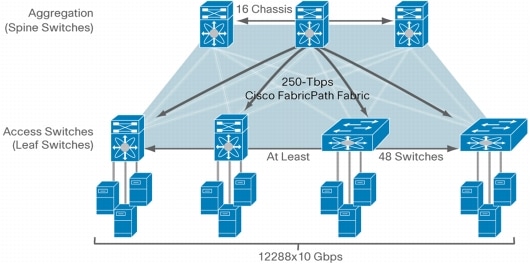Data centers are different to many enterprise campuses in that they need to extend layer 2 connectivity across large portions of the data center, often to take advantage technologies such as moving virtual machines around the data center.
Without going too far under the hood and staying very conceptual at this stage FabricPath uses a control protocol on top of IS-IS to delivery scalable L2 connectivity without blocking links.
Instead of the classic "data center triangle" using vPC and 2 connections to each pods aggregation switch FabricPath has a single connection to each aggregation switch. Using the example above the bandwidth is the same (40Gbps) but aggregation switch failure only reduces this by 25% rather than 50%.
FabricPath uses ECMP (Equal Cost MultiPath) so that all links are forwarding and the ports in a port channel is 16 and ECMP v1 supports 16 way ECMP, making the fabrics potential 2.56Tbps (16 ports x 16 way x 10Gbps = 2560Gbps) as illustrated in the next diagram, again taken from the Cisco FabricPath white paper:
Some benefits of FabricPath include:
- Simpler configuration
- Scalable layer 2 connectivity
- Higher Bandwidth
- Better availability in failure scenarios
Resources:
This information was mainly taken from the Cisco FabricPath whitepaper but trimmed and reworded for my own reference:
Cisco FabricPath Whitepaper


No comments:
Post a Comment